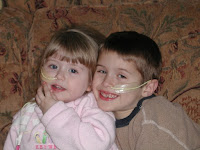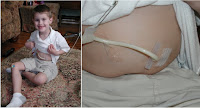Since it isn't an immediate reaction, the normal allergy tests (SPT and RAST) are not always going to be helpful. Skin Prick Testing can be helpful for some, but not the majority. Even with regular allergies, there is a 40% chance of false positive results with Skin Prick Testing as it is. RAST has proven not to be helpful and is not used by the Drs who commonly treat EoE. PATCH testing is used and is also helpful for some, but not everyone, and there can be false positive as well as false negative results.
The damage is internal, so it can only be diagnosed via endoscopy with multiple biopsies of each area of the esophagus, because it presents in patches. If you only get one biopsy of each area, it may be missed. You also can't just diagnose by the way the esophagus looks, as sometimes it may look fine but the biopsies show otherwise or, conversely, it may look like EoE but might be something else. Biopsies are the only way to tell. Hopefully, one day there will be less invasive testing that will be equally as accurate, but that is the only option for now.
My son was diagnosed 6 yrs ago, when he was 6 yrs old, but he has had it since birth and displayed symptoms immediately. While many people only react to a few foods and are able to pinpoint those foods via an elimination diet, that did not work for us, despite eliminating 14 different foods. So, in his case, he needed to remove ALL food!
Since we are not fans of steroids, especially long-term (which was the only other option and would be a life-long treatment) and we wanted to make sure we knew what he can eat and what he needs to avoid so we can build a safe diet for him - one that he can follow when he is an adult as well so he can stay healthy. Thankfully, his doctors at Children's Hospital of Philadelphia (CHOP) do not encourage steroids either as the first line of treatment. However, they treat each child on an individual basis, realizing that what is appropriate for one child (and their family) is not necessarily appropriate for another. My son was prescribed an elemental formula. It is amino-acid-based with no intact food proteins for the body to react to. It allows the body to get the nutrients it needs without reacting, thus allowing it to heal. The most common ones used in the US are E028 Splash
In those 5 yrs, we have been doing food trials. While he has failed several, he has also passed many over the past 2 yrs, and his options are much greater now that there are more allergy-friendly foods on the market. My goal, which I think is a realistic one, is that he will have enough safe foods to remove the G-tube before high school.
I wanted to give a brief synopsis of our situation. I will also later discuss how it has affected his younger sister, as well as the less severe food issues we have experienced with her (she does not have EoE). Furthermore, since my son also has a diagnosis of Asperger Syndrome, and there seems to be a very large # of kids with eosinophilic disorders who are on the spectrum, I'll include our experiences in that regard, as well as resources I found helpful.
I started this blog to try to share some of our experiences, from pre-diagnosis through now, in hopes that it may help others who are dealing with the same disorder. While many with Eosinophilic Esophagitis will not have the severity of symptoms or react to as many foods, I hope to share our experience in a way that will help others regardless of age, severity, type of treatment, etc. I also plan to share some helpful tips, websites, products, cookbooks, recipes, etc.
I also want to point out that I am not a physician and I do not offer medical advice. Nothing I say is to be used or construed as medical advice. You should address any questions or concerns about your specific needs to your licensed healthcare professionals (physicians) and never delay seeking medical treatment from your licensed healthcare provider as a result of anything you read on this blog.
If you want to learn more about Eosinophilic Esophagitis or Eosinophilic Gastrointestinal Disease in general, please visit the American Partnership for Eosinophilic Disorders (APFED) at http://apfed.org/
APFED has several leaders in the field on their medical advisory board and the information on their site is accurate and up-to-date.
I also have a specific "About Eosinophilic Esophagitis" page on this blog. See the menu above on the left.
Thanks for reading! :-)





No comments:
Post a Comment